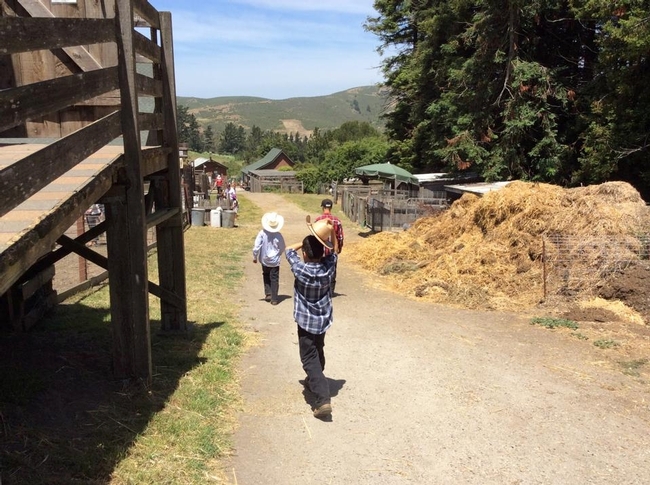From the UC Blogosphere...
Daily Life For Master Gardeners
Sweet Peas By Andrea Peck "The odor of the sweet pea is so offensive to flies that it will drive them out of a...
The Buzzingham Palace
"All the buzz" in England is the birth of a new member of the royal family, Her Royal Highness Princess Charlotte...
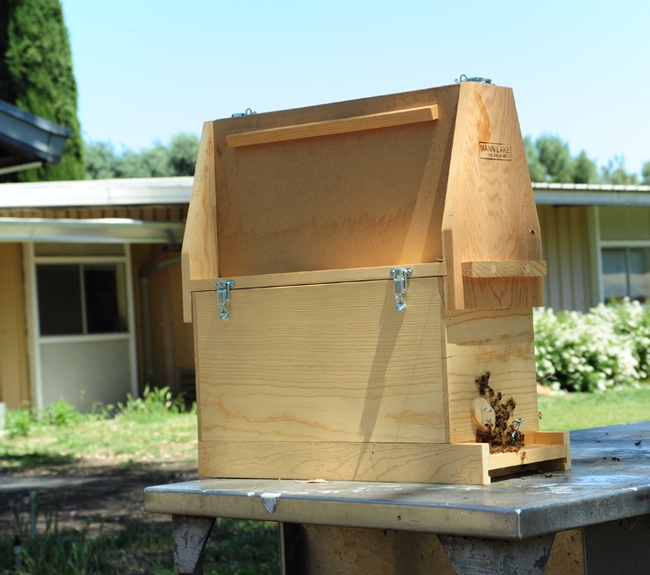
This bee observation hive, named "The Buzzingham Palace," will be on display Thursday through Sunday, May 7-10 at the Dixon May Fair. (Photo by Kathy Keatley Garvey)
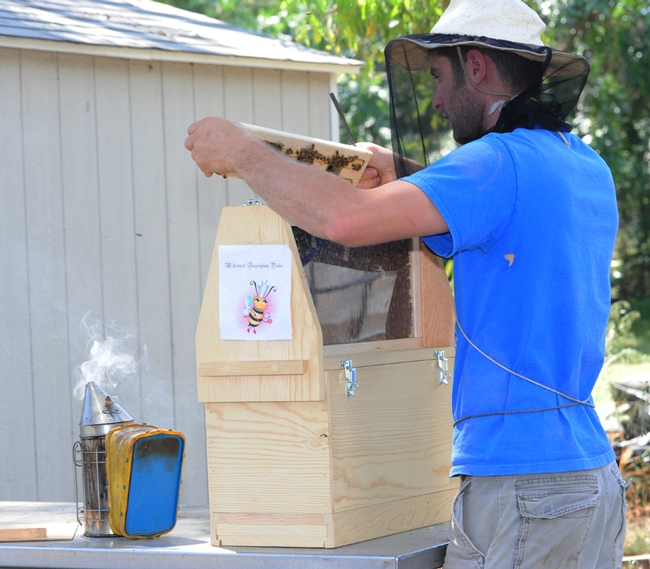
Staff research associate Billy Synk of the Harry H. Laidlaw Jr. Honey Bee Research Facility, UC Davis, opening the Buzzingham Palace. (Photo by Kathy Keatley Garvey)
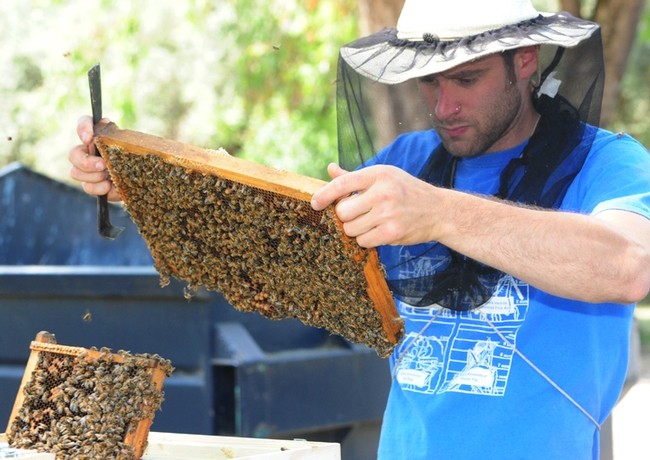
Staff research associate Billy Synk of the Harry H. Laidlaw Jr. Honey Bee Research Facility, UC Davis, checking the frames. (Photo by Kathy Keatley Garvey)
Elkus Ranch seeks to expand
The UC Agriculture and Natural Resources (UC ANR) Elkus Ranch Environmental Education Center near Half Moon Bay is making plans to expand its conference center to offer more flexible facilities for conventions and team-building exercises, reported Julia Reis in the Half Moon Bay Review.
The ranch was donated to UC in 1975 and hosts more than 6,000 youth and adults from all over the San Francisco Bay Area each year. UC ANR presents 4-H programs at Elkus Ranch for children from preschool through high school to explore the processes of producing food and fiber, nutrition programs, community service days and special events. The site is also available for daytime retreats, meetings, workshops, weddings and other special events.
Elkus Ranch director Virginia Bolshakova send a request for qualifications to area planning firms which are due this Friday. The proposals should include potential project scope and plans for improved overnight accommodations, new field laboratory areas and new walking trails.
Program coordinator Leslie Jensen took the reporter on the tour of Elkus Ranch's facilities and shared the staff's vision for improvements. The staff envisions adding yurts for student housing or replacing or renovating the building where students currently sleep. The ranch's water system is also in need of updating and the staff wants the education center to be "greener." The study is to be completed by Sept. 1.
A Case of Mistaken Identity
"Ah, look at that cute little yellow ladybug! Isn't it pretty?" How many times have you heard that? Often it is not the...
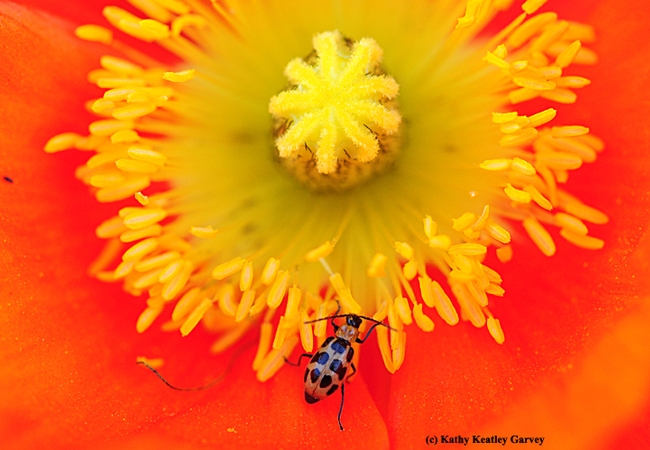
A spotted cucumber beetle foraging on Iceland poppy. (Photo by Kathy Keatley Garvey)
Recycled irrigation water raises food safety questions
"Everyone smells the petrochemicals in the irrigation water," said Blake Sanden, UC Agriculture and Natural Resources Cooperative Extension advisor in Kern County. "When I talk to growers, and they smell the oil field crap in that water, they assume the soil is taking care of this."
The farmers trust that organisms in the soil remove toxins or impurities in the water. However, the trust may be misplaced.
Microoganisms in soils can consume and process some impurities, Sanden said, but it's not clear whether oil field waste is making its way into the roots or leaves of irrigated plants, and then into the food chain.
It's unlikely that petrochemicals will show up in an almond, for example, he said, "But can they make it into the flesh of an orange or grape? It's possible. A lot of this stuff has not been studied in a field setting or for commercial food uptake."
The reporter also spoke to Carl Winter, a UC ANR Cooperative Extension specialist based at UC Davis. He said some plants can absorb toxins without transferring them to the leaves or the flesh of their fruit.
Still, he said, "it's difficult to say anything for sure because we don't know what chemicals are in the water."
A visiting scholar at UC Berkeley who is a researcher analyzing hydraulic fracturing for the California legislature said the issue is "one of the things that keeps me up at night."
"You can't find what you don't look for," he said.



